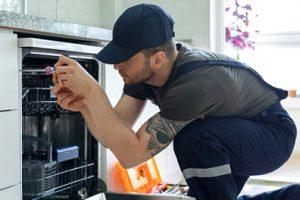Refrigerators are an essential part of modern life, helping to preserve food and keep beverages cool. However, many people are unaware of how to properly set and manage their refrigerator temperature settings.
Understanding these settings is crucial for maintaining food safety, energy efficiency, and extending the lifespan of your refrigerator. In this comprehensive guide, we will delve into everything you need to know about refrigerator temperature settings, ensuring you have all the knowledge to keep your food fresh and your appliance running smoothly.
Importance of Proper Refrigerator Temperature Settings
Setting your refrigerator to the correct temperature is vital for several reasons:
- Food Safety: Improper temperature settings can lead to the growth of harmful bacteria, increasing the risk of foodborne illnesses.
- Energy Efficiency: Correct settings can help reduce energy consumption, saving you money on utility bills.
- Appliance Longevity: Maintaining the right temperature can prevent your refrigerator from overworking, thereby extending its lifespan.
Ideal Refrigerator Temperature Settings
The optimal temperature range for a refrigerator is between 35°F and 38°F (1.7°C to 3.3°C). For the freezer, it should be set at 0°F (-18°C). These settings ensure that food is kept cold enough to prevent spoilage and bacterial growth without being so cold that it freezes or overworks the appliance.

Step-by-Step Guide to Setting Your Refrigerator Temperature
Step 1: Locate the Temperature Controls
Most refrigerators have temperature controls located inside the main compartment or on the digital display panel on the door. These controls may be dials, sliders, or digital buttons.
Step 2: Adjust the Settings
- For Dial or Slider Controls: These are usually numbered from 1 to 5 or 1 to 9. A higher number corresponds to a colder temperature. Start by setting the control to the middle setting (usually 3 or 4) and adjust as needed.
- For Digital Controls: Simply press the button to set the temperature. Refer to the user manual for specific instructions for your model.
Step 3: Use a Refrigerator Thermometer
To ensure accuracy, place a refrigerator thermometer in the middle of the compartment. Leave it for 24 hours to get an accurate reading. Adjust the temperature control if necessary to maintain the ideal range.
Step 4: Monitor and Adjust
Regularly check the thermometer and make small adjustments to the temperature settings as needed, especially after adding large amounts of food or during changes in ambient temperature.
Factors Affecting Refrigerator Temperature
Several factors can influence how well your refrigerator maintains its temperature:
- Door Openings: Frequent opening and closing of the refrigerator door can cause temperature fluctuations. Try to minimize the time the door is open.
- Food Load: A refrigerator that is too full or too empty can affect temperature regulation. Aim for a well-balanced load to ensure proper airflow.
- Ambient Temperature: The temperature of the room where the refrigerator is located can impact its internal temperature. Keep the refrigerator away from direct sunlight and heat sources.
- Maintenance: Regular cleaning and maintenance, such as defrosting the freezer and cleaning the coils, can help your refrigerator maintain consistent temperatures.
Common Refrigerator Temperature Problems and Solutions

Problem 1: Refrigerator Too Warm
Solution:
- Check the temperature setting and adjust if necessary.
- Ensure the door seals are intact and not letting warm air in.
- Clean the condenser coils to improve cooling efficiency.
Problem 2: Refrigerator Too Cold
Solution:
- Adjust the temperature setting to a warmer setting.
- Check for any obstructions blocking the airflow vents.
- Ensure the temperature sensor is functioning correctly.
Problem 3: Uneven Cooling
Solution:
- Arrange food items to allow proper airflow.
- Avoid placing hot food directly in the refrigerator.
- Consider using fans or air circulators if your refrigerator model allows.
Tips for Maintaining Optimal Refrigerator Temperature Settings
- Regular Maintenance: Schedule regular maintenance checks, including cleaning coils, defrosting the freezer, and checking door seals.
- Temperature Monitoring: Use a refrigerator thermometer to monitor temperatures regularly.
- Proper Food Storage: Store food items appropriately to ensure good airflow and even cooling.
- Energy Efficiency: Ensure your refrigerator is in an energy-efficient location, away from heat sources and direct sunlight.
Conclusion
Understanding and properly managing your refrigerator temperature settings is essential for food safety, energy efficiency, and the longevity of your appliance. By following the steps outlined in this guide, you can ensure your refrigerator operates at its best, keeping your food fresh and safe to eat.
Regular maintenance and monitoring are key to achieving optimal performance and avoiding common temperature-related problems. With the right knowledge and practices, you can make the most of your refrigerator and enjoy the benefits of a well-maintained kitchen appliance.







